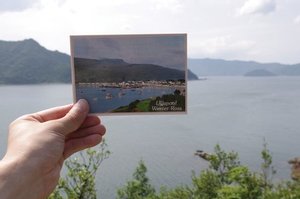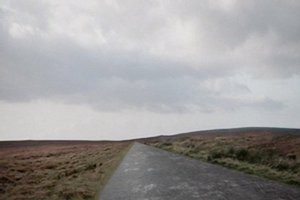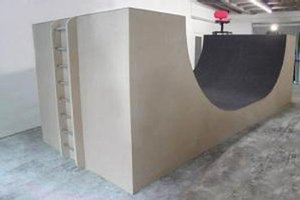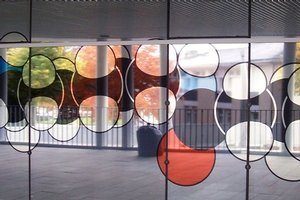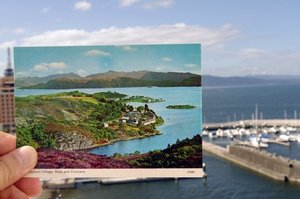A journey of time and space. Scotland-Japan, Now and EDO
Un texte de Tomohiko Ogawa écrit à l'occasion d'un récent travail de correspondance avec l'artiste écossais Alec Finlay.
Tomohiko Ogawa est artiste, il vit et travaille à Beppu, Japon.
A journey of time and space. Scotland-Japan, Now and EDO
The Road North is a poetic project which is a tribute for a goldstandard japanese HAIKU poetry, "Oku no Hosomichi -means The Narrow Road to the Deep North or The Narrow Road to the Interior", intended by a scotish artist Alec Finlay as Sora and a scotish poet Ken Cockburn as Basho. They explane about this project on their blog as "the road north is a word-map of Scotland, composed by Alec Finlay & Ken Cockburn as they travel through their homeland, guided by the Japanese poet Basho, whose Oku-no-Hosomichi (Narrow Road to the Deep North) is one of the masterpieces of travel literature. Ken and Alec left Edo (Edinburgh) on May 16, 2010 - the very same date that Basho and his companion Sora departed in 1689 - and when they return, on Ma...
_Lire la suite
A journey of time and space. Scotland-Japan, Now and EDO
Un texte de Tomohiko Ogawa écrit à l'occasion d'un récent travail de correspondance avec l'artiste écossais Alec Finlay.
Tomohiko Ogawa est artiste, il vit et travaille à Beppu, Japon.
A journey of time and space. Scotland-Japan, Now and EDO
The Road North is a poetic project which is a tribute for a goldstandard japanese HAIKU poetry, "Oku no Hosomichi -means The Narrow Road to the Deep North or The Narrow Road to the Interior", intended by a scotish artist Alec Finlay as Sora and a scotish poet Ken Cockburn as Basho. They explane about this project on their blog as "the road north is a word-map of Scotland, composed by Alec Finlay & Ken Cockburn as they travel through their homeland, guided by the Japanese poet Basho, whose Oku-no-Hosomichi (Narrow Road to the Deep North) is one of the masterpieces of travel literature. Ken and Alec left Edo (Edinburgh) on May 16, 2010 - the very same date that Basho and his companion Sora departed in 1689 - and when they return, on May 16, 2011, they will publish 53 collaborative audio & visual poems describing the landscapes they have seen and people they have met. For now, you can follow their progress week by week, and read about some of the places that Basho leads them to."
Probably I should explain more about original "Oku no Hosomichi".
Oku no Hosomichi was written by Matsuo Basho over 300 years ago when Basho was 46 years old and this his age was thought enough old in this time, no wonder if he died along this trip. Since Oku no Hosomichi, Basho wasn't taken as famous Haiku poet. So this was also very ambitious work in his life and actually after Oku no Hosomichi, Basho's fame had got established. Still it is reigning as best literature of trip and classic Haiku.
Here, I must tell about rules of Haiku. In Haiku, any seasonal word must be read. And a Haiku must be read in three verse each has 5-7-5 syllables. For Haiku, as I explained here, landscapes are essentially important. Basho's Haiku trip was the trip to follow numerous scene which were found as "anchor of poetry" before him. This "anchor of poetry" is said "pillow of poetry" in Japanese.
Haiku is an art to draw subtly lyric by epic.
I convince myself that this concept "Anchor of poetry" is essence for their project "The road north" too. Their travel for north Scotland seems a trip to settle "Anchor of poetry" around Scotland. It might be an activity to re-discover or might be to be engaged with landscape.
Fortunately I could join in this project "The road north" remotely in south part of Japan, in Beppu in Kyusyu island where far away from Scotland and even opposite site of north east Japan where Basho and Sora triped. For me, this creation made me to find out "anchor of poetry" of myself.
Beginning of our intimacy was started by my visiting him as a fun of his art. Probably I feel sympathy in his art by its sense to find and grab something out from ordinary life and landscape. Since that I have kept to follow his activity and sometimes I report my work almost every time when I create new. As a result I got offered by him to join in this project "The road north" any how.
First he seemed expect me to trip and trace the footpath of Basho and Sora but I could not. Instead of that I decided to play with landscapes of Scotland and around me. I have worked in Beppu since autumn of last year but originally I am based in Hokkaido, where is most north of Japan. And I slightly have enough of around Beppu and I thought that joining in this project might be an opportunity to make it familiar with freshness and I need to make it so.
Alec provided me many postcards of scotish sites. These became materials of my work for this project. As a fruit these postcards grafted in sight around Beppu. I keep to create 2 series of artworks for this project.
One is titled "Reversed journey (for Oku via Scotland) "and another is titled "flat ridge".
In creation of "Reversed journey (for Oku via Scotland)", of course I have to have excursions. Anytime I watch and looking for landscape which can be a base for sent postcards. I found that it brought me fresh and perceptive vision in everyday life. While making this artworks, I have to think about value of landscapes. How do we chose a site to fix on postcards ? How can we sense beauty and ugly in some landscape as japanese poet determine "anchor of poetry"?
These questions are every time associated with my creation as well as for these works.
Two "Flat ridge" are both made from postcards. One is postcard of site of scotland sent by Alec, another is old postcard I bought from ebay. You can see the site of lake Chuzenji in Nikko, Mt.Nantai is a mountain which Basho sung in his Haiku, in "Oku no hosomichi". I wonder how different(same) this view in this postcard and scene which Basho saw. I just suppose at least line of ridge of this mountain is same for us and for Basho.
This series of "Flat ridge" is made with simple operation. Skyline is compressed in Horizon. Then, new ridges are appeared at top and bottom of the edge of card and sometimes horizon in the postcards transform into ridge.
As journey of Alec and Ken still continues, I will keep to search landscapes can be a base of postcard. And now the ancient concept of "Anchor of poetry" must keep being in my thought.
Here I would like to thank to Alec Finlay and Ken Cockburn for offering me to associate with this project and taking me to such a far perceptional trip.
Links:
The Road North
http://the-road-north.blogspot.com/
Alec Finlay
http://www.alecfinlay.com/
Ken Cockburn
http://www.kencockburn.co.uk/
Tomohiko Ogawa
http://ogawa-tomohiko.com/
